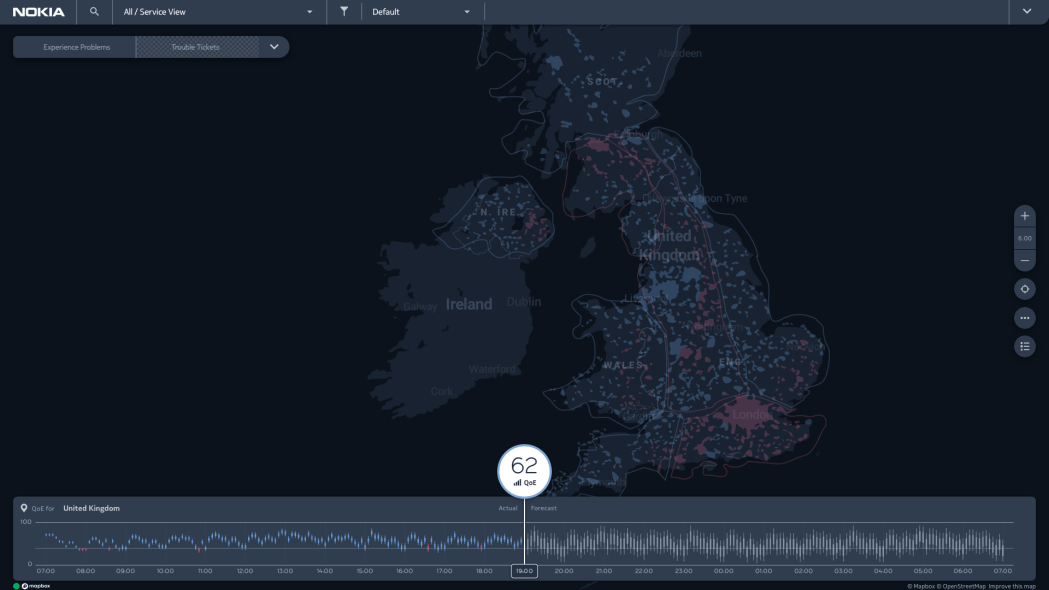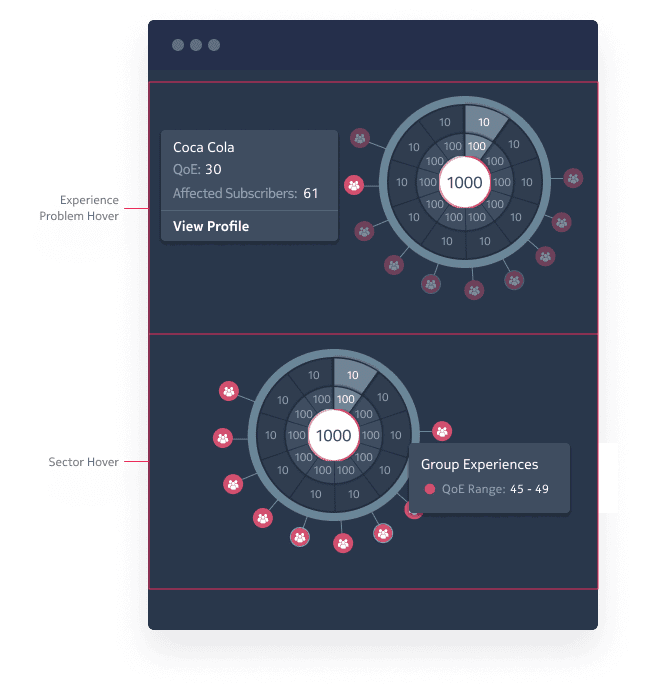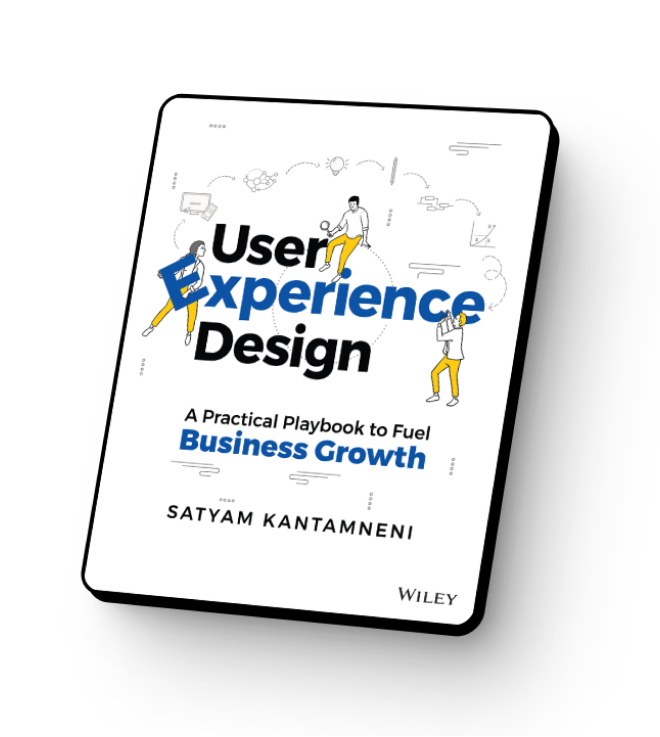Our redesigned Service Operations Center doubled Nokia’s customer growth rate.
In 2019, Nokia engaged UXReactor to design a highly innovative Service Operations Center to serve 32 million UK phone service subscribers. Working closely with Nokia over eight months, UXReactor designed, validated, and delivered a user-accepted product like no other system available on the market.
What We Did for Nokia
- Stakeholder Alignment
- User Research, Validation, and Testing
- UX Design
- Development
The evolved Service Operations Center, otherwise known as Nokia’s Experience Center, empowers phone carriers to dramatically improve the customer experience while growing profits.
Within one year, the new Nokia Experience Center directly contributed to a 100% increase in the growth rate of the phone carrier’s customer base.

Nokia Experience allows us to proactively monitor our customers’ experiences and take the actions needed, based on measured trends, and done through automation.
While the results speak for themselves, the full story of our design of the Nokia Experience Center demonstrates the way we work with enterprise clients to deliver result-generating UX.
Continue reading for more detail on how our design process did that for Nokia.
Poor Enterprise Software UX Creates Customer Dissatisfaction
Phone service operators are at the front line of service resolution. However,
- Service operators can’t predict, prevent, or even prepare for most service issues
- Their software is inefficient by design, and it takes too long to navigate across modules
- The data operators need is disorganized and presented in an unclear way
- It’s difficult to confirm the accuracy of what information is available
- Operators can’t find a single source of truth on the root cause of service interruptions
It used to take up to ten minutes for service operators to gather data from about five different tools before being able to diagnose service issues for customers. If service operators could track and triangulate data on major events, for example, they could predict customer connectivity issues in advance, enabling your carrier to proactively redirect bandwidth so you experience service as usual.
An “evolved SOC” (eSOC) platform would help service operators proactively monitor the network, individual customer experiences, and service performance in real-time.
No other network and no other phone carrier service had cracked this innovation challenge. By launching a successful eSOC, Nokia could break entirely new ground — miles ahead of the competition.
When Nokia engaged UXReactor, we had just eight months to deliver a working eSOC platform to one of the United Kingdom’s largest phone carriers. Despite a tight timeline, we followed our proven process.
Stakeholder Alignment
Our first task was to align the internal Nokia stakeholders around a user-centered approach to solving the problem. Historically, Nokia has been a technology and engineering-first organization. What’s more, from R&D to engineering, product management, sales, and business development, different teams had different ideas of how the product should look. We assembled teams from across the globe in one place to reach a consensus on user needs and solutions.
User Research
Diving deep into user research, we discovered that service operators experienced several challenges that ate into their time and caused frustration, especially when operators needed to identify root causes of customer issues. Vast undifferentiated data and disconnected tools slowed them down.
Software Redesign
The UXReactor team redesigned the framework to integrate operator workflows and tools into a single digital workspace — one that efficiently organizes data (no matter how complex) and presents operators with a cohesive, easy-to-understand picture of customer network experiences.
The New Nokia Experience Center gives service operators a 360° view of the customer experience and service quality in a single workspace.
For the first time, service operators can predict network service issues and proactively communicate with customers who may experience problems. The carrier saves costs because a single operator can monitor about 30,000 customer experiences at once and serve callers in less time. Those operators are not only more efficient — they now have more job satisfaction. The eSOC is intuitive, and it empowers service operators to be truly effective at their work. They can make confident, data-driven decisions that ultimately improve customer happiness.
All of this is possible only because Nokia had a radical vision of an evolved Service Operating Center. And they trusted in design to bring that innovation to life.

Product Experience Strategy and Design
The Competition is a Click Away. What Sets Your Product Apart?
Learn More







